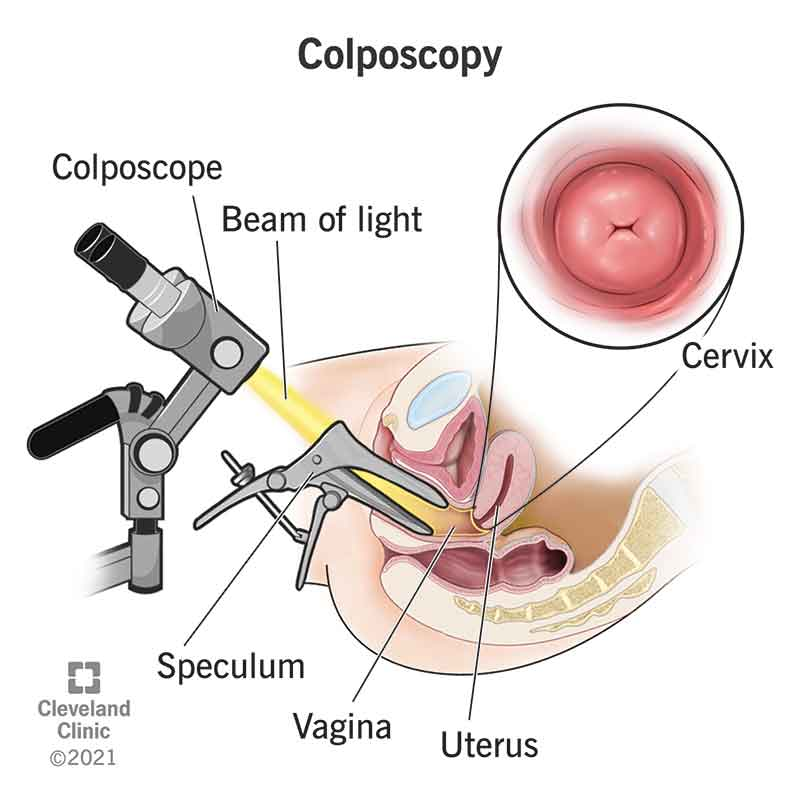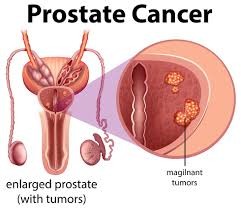A nurse is teaching a client who is scheduled for a colposcopy tomorrow. Which of the following statements should the nurse include in the teaching?
"This procedure is routinely performed during a Pap test."
"During the procedure, a biopsy may be performed."
"Do not eat or drink after midnight tonight."
"You will have general anesthesia during this procedure."
The Correct Answer is B
Choice A reason:
The statement "This procedure is routinely performed during a Pap test" is incorrect. A colposcopy is not routinely performed during a Pap test; it is a separate procedure that is often recommended if a Pap test shows abnormal results. The colposcopy allows for a closer examination of the cervix, vagina, and vulva to detect any signs of disease.
Choice B reason:
The statement "During the procedure, a biopsy may be performed" is correct. If the healthcare provider sees an area of concern during the colposcopy, they may take a small sample of tissue (biopsy) from the cervix or from inside the opening of the cervix.
Choice C reason:
The statement "Do not eat or drink after midnight tonight" is not necessary for a colposcopy. Unlike some surgical procedures that require general anesthesia, a colposcopy is usually done with local anesthesia, and fasting is not required.
Choice D reason:
The statement "You will have general anesthesia during this procedure" is incorrect. General anesthesia is not typically used for a colposcopy. The procedure may cause some discomfort, but it is usually performed using local anesthesia or no anesthesia at all.

Nursing Test Bank
Naxlex Comprehensive Predictor Exams
Related Questions
Correct Answer is B
Explanation
Choice A reason:
Testicular torsion is a condition where the spermatic cord becomes twisted, cutting off the blood supply to the testicle. It is not a typical complication following a prostatectomy. Testicular torsion is generally an acute condition that affects younger males and is unrelated to prostate surgery.
Choice B reason:
Erectile dysfunction (ED) is a common complication after prostatectomy. The surgery can damage the nerves and blood vessels that control erections, leading to ED. While nerve-sparing techniques aim to reduce this risk, some degree of erectile dysfunction is still possible after the procedure.
Choice C reason:
Cystitis, which is inflammation of the bladder, can occur after a prostatectomy due to the use of a catheter or as a result of the surgery itself. However, it is not as common or as significant a long-term complication as erectile dysfunction.
Choice D reason:
Paralytic ileus, a temporary cessation of bowel movements, can occur after any abdominal surgery due to the manipulation of the intestines or as a side effect of anesthesia. While it can be a complication of prostatectomy, it is typically resolved within a few days to weeks after surgery.

Correct Answer is D
Explanation
Choice A reason:
Monitoring temperature is important postoperatively as it can indicate infection or inflammation. However, it is not the immediate priority following a thyroidectomy. The primary concern post-thyroidectomy is ensuring the airway is not compromised due to swelling or bleeding.
Choice B reason:
Monitoring urination is part of postoperative care to ensure kidney function and that the body is adequately eliminating fluids. While important, it is not the priority in the immediate postoperative period following a thyroidectomy.
Choice C reason:
Pain control is essential for patient comfort and recovery. However, while managing pain is a significant aspect of postoperative care, it is not the most critical priority following a thyroidectomy. The nurse must first ensure that the airway is clear.
Choice D reason:
Airway patency is the priority for monitoring a client post-thyroidectomy. Due to the proximity of the surgery to the trachea, there is a risk of swelling, hematoma, or other complications that could lead to airway obstruction. Ensuring the client has a patent airway is crucial to prevent respiratory distress or compromise.
Whether you are a student looking to ace your exams or a practicing nurse seeking to enhance your expertise , our nursing education contents will empower you with the confidence and competence to make a difference in the lives of patients and become a respected leader in the healthcare field.
Visit Naxlex, invest in your future and unlock endless possibilities with our unparalleled nursing education contents today
Report Wrong Answer on the Current Question
Do you disagree with the answer? If yes, what is your expected answer? Explain.
Kindly be descriptive with the issue you are facing.
